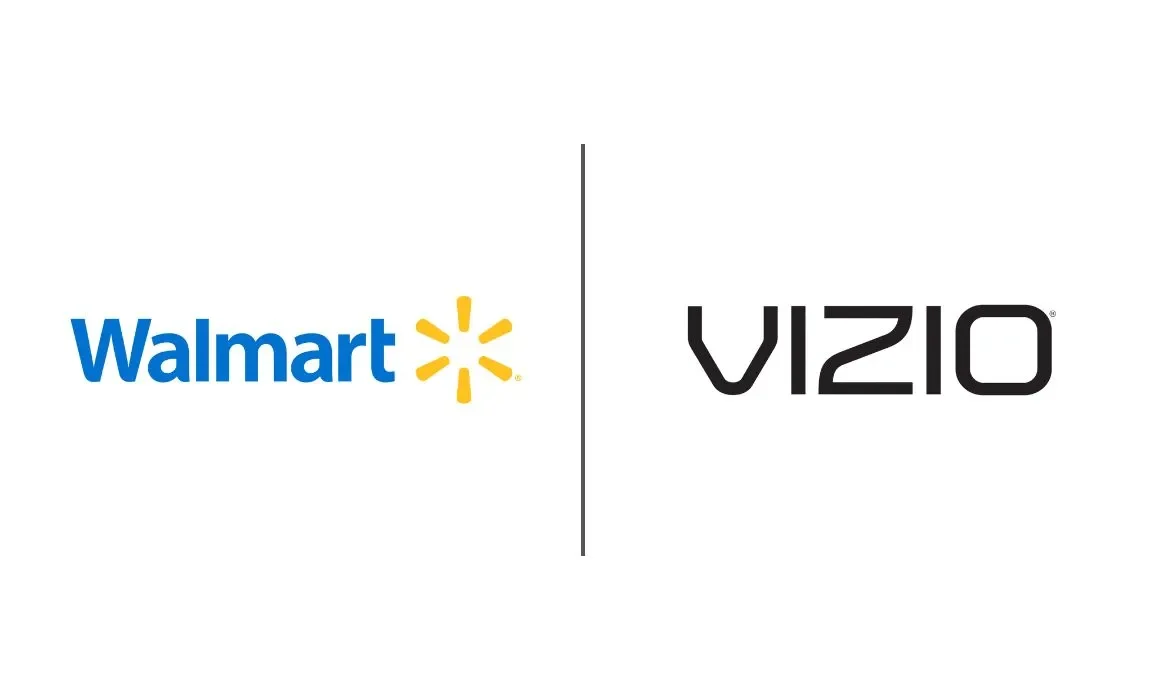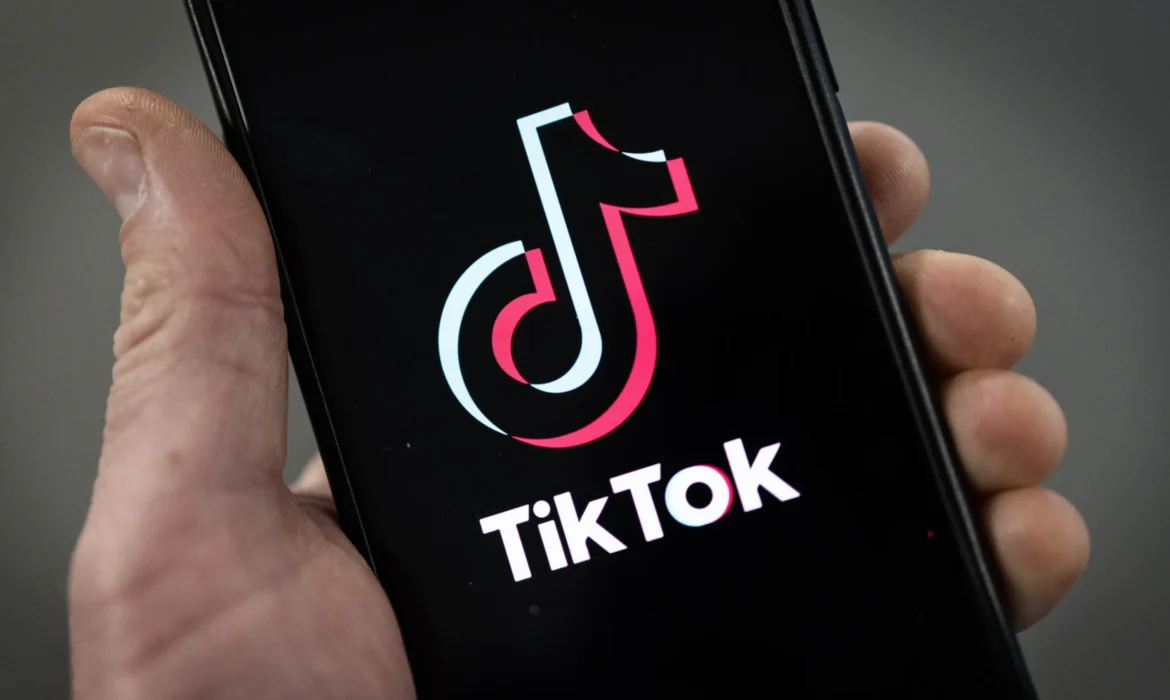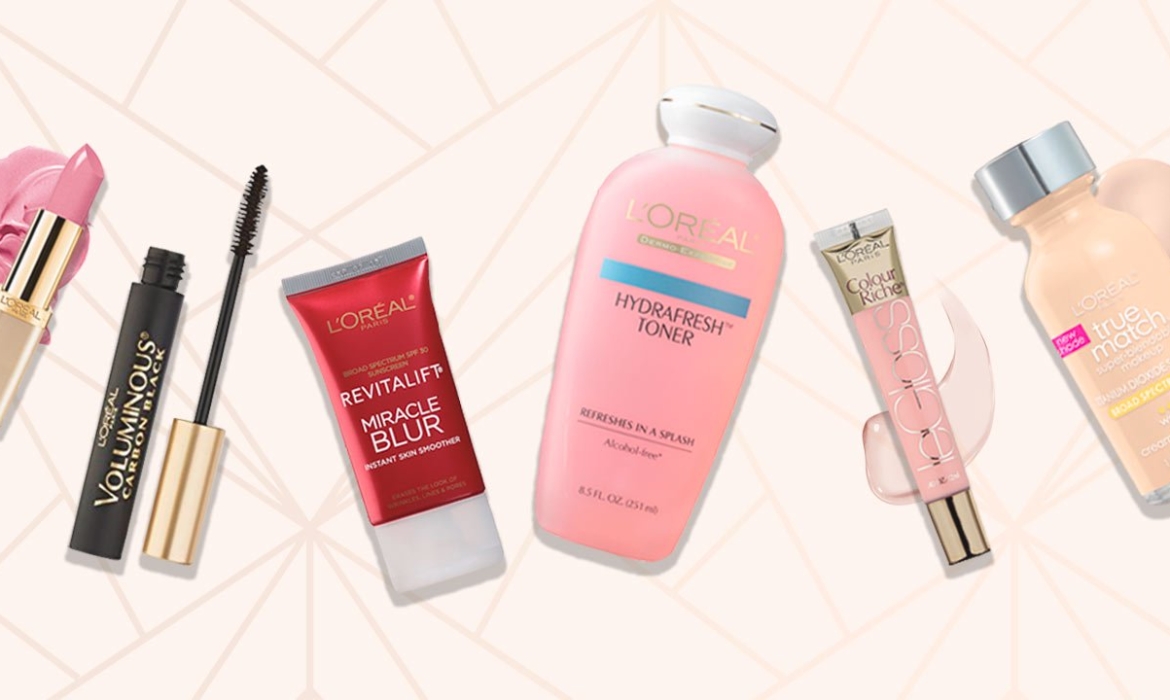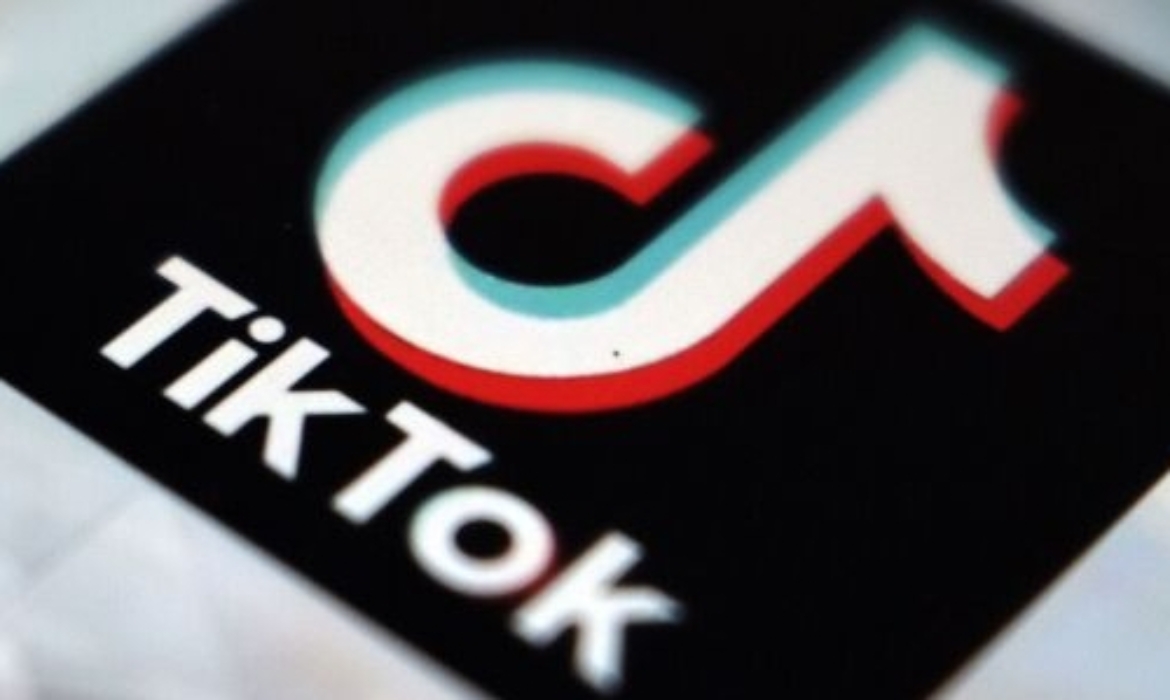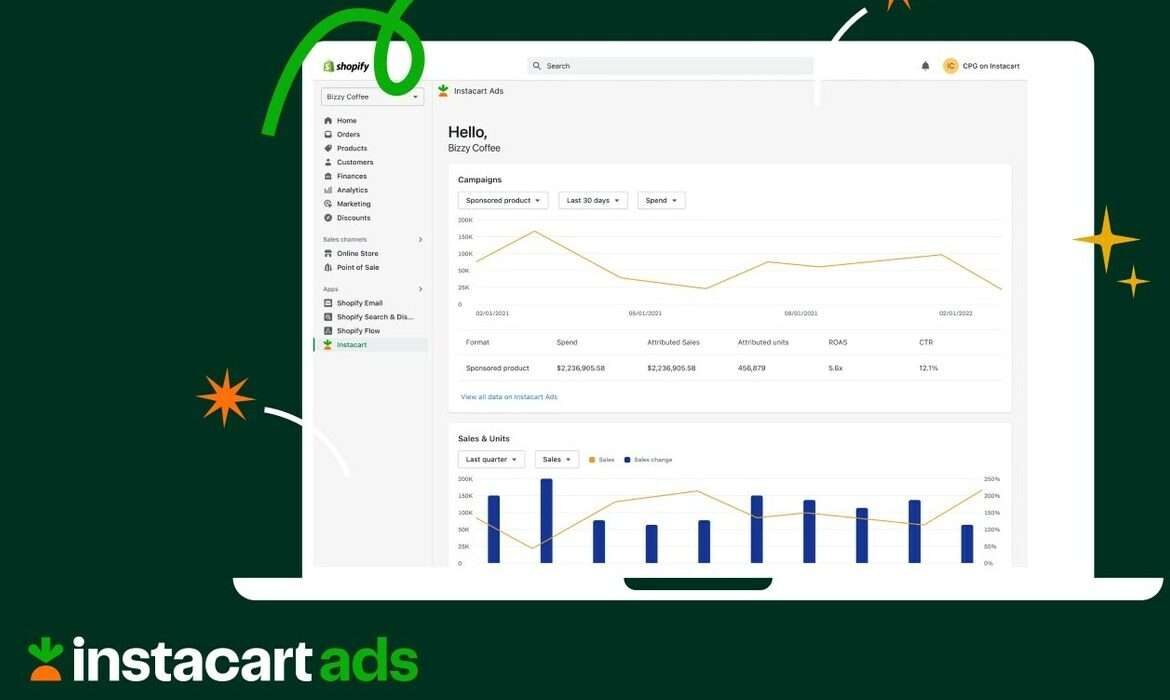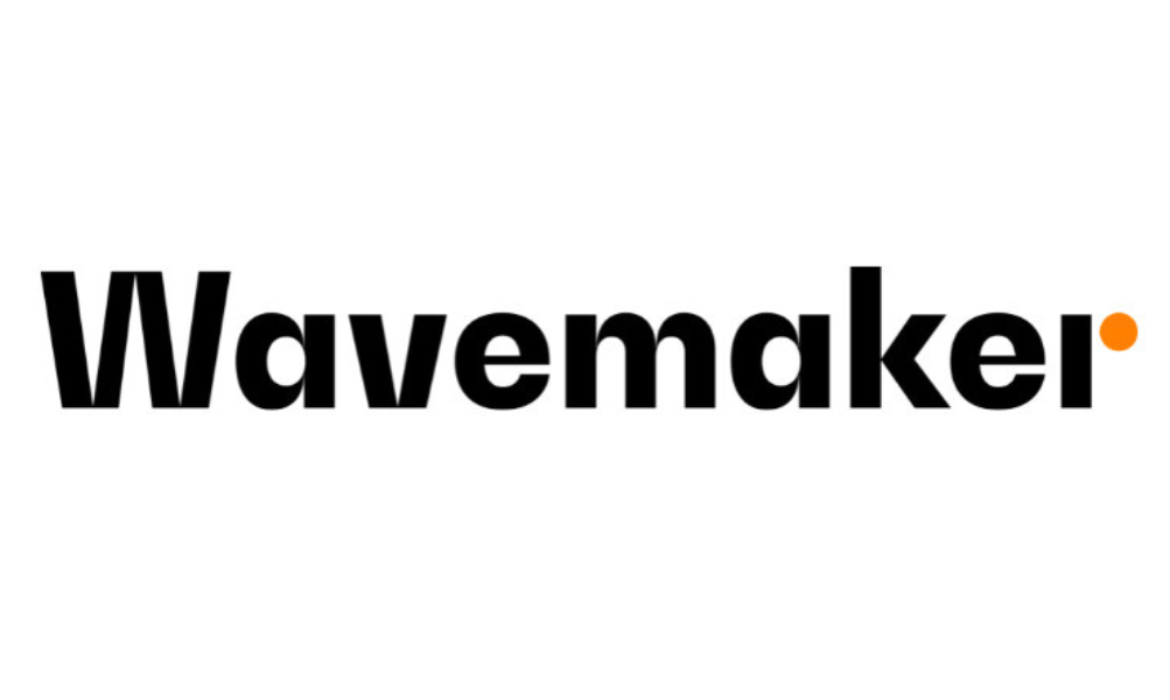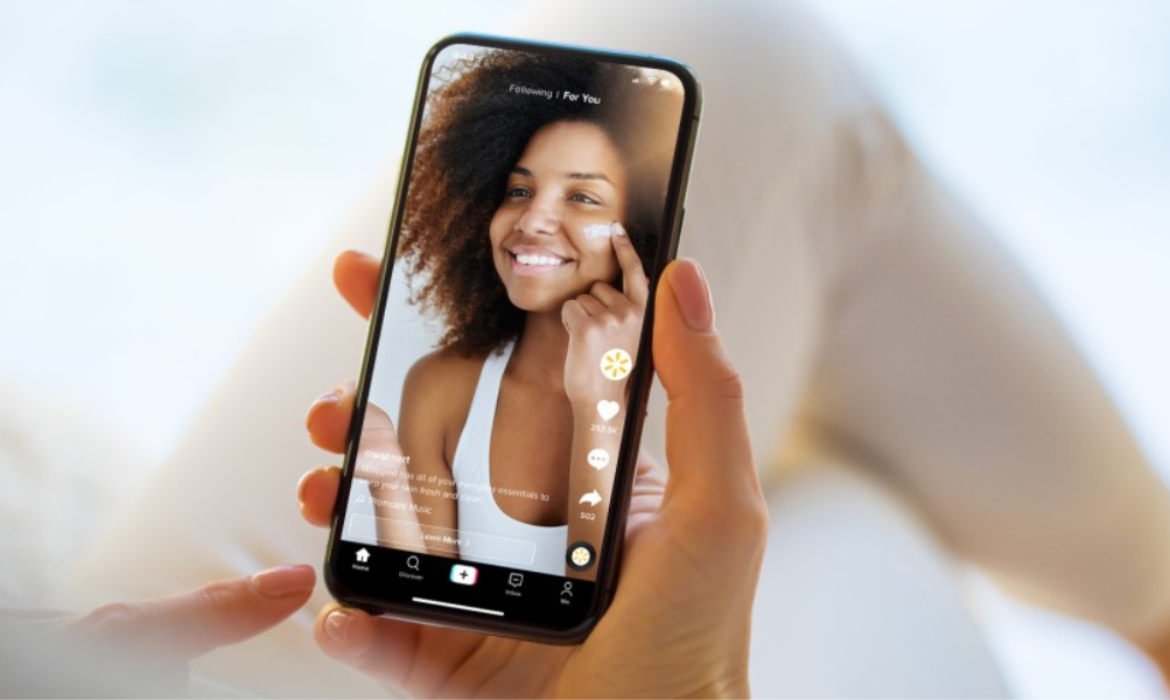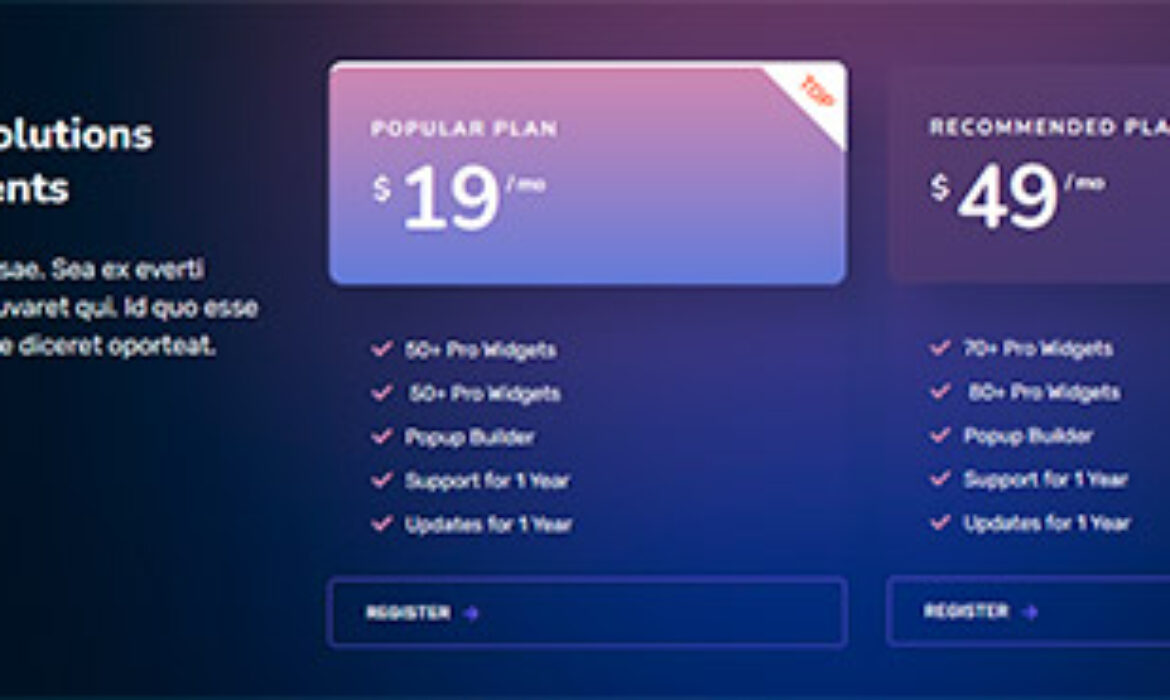Walmart Reveals Plans to Acquire Smart TV Maker VIZIO for $2.3B
Walmart, a US-based retail chain, has revealed that it will acquire VIZIO, a maker of smart TV, for $2.3 billion. The retail giant made this decision to compete with Amazon by growing its quickly expanding advertising business. Walmart has consistently been a prominent vendor of VIZIO televisions. With VIZIO’s SmartCast OS, the acquisition, according to the company, it will allow for “a profitable advertising business that is rapidly scaling.”
If the agreement is finalized, Walmart will have access to VIZIO’s SmartCast OS, which will enable the retail behemoth to provide its suppliers with streaming device ad display capabilities. Walmart will now be a major competitor in connected TV advertising, alongside Roku, Amazon, Google/YouTube, and Samsung Ads, thanks to the agreement. Closing conditions and regulatory approvals are subject to the deal. The transaction has received unanimous approval from the Vizio board of directors and the approval of shareholders who hold 89% of the voting shares in the company.
Walmart competing against Amazon
The decision was made after Amazon revealed last month that, in addition to the $14.99 monthly or $139 annual fee for Prime membership, it will begin charging its members $2.9 per month to maintain ad-free viewing of their movies and TV shows. With 18 million active accounts, VIZIO’s SmartCast system has increased 400% since 2018. According to the companies, VIZIO’s platform has over 500 direct advertisers. The majority of the company’s gross profit is currently derived from ads.
What impact will this deal have on US television?
The companies intend to merge their individual advertising businesses. Walmart currently has a $2.7 billion advertising business. Furthermore, VIZIO intends to get more access to important consumer data, such as viewership statistics. More people are anticipated to watch Walmart’s advertisements as a result of this. For instance, retailers like Walmart can monitor all advertisements that businesses that sell products there run on VIZIO TVs.
Walmart’s acquisition of Smart TV maker VIZIO and SmartCast OS
Walmart’s acquisition of VIZIO and its SmartCast Operating System (OS) would allow it to connect with and serve its customers in new ways. These include innovative television, in-home entertainment, and media experiences. Additionally, it would open up new avenues for connecting brands with consumers. It would give them unique and compelling chances to interact with consumers on a large scale and get more out of their Walmart advertising budgets. By combining VIZIO’s advertising solutions business with Walmart’s reach and capabilities, the deal is anticipated to further accelerate Walmart’s media business in the United States, known as Walmart Connect. The expansion of connected TV platforms and Walmart’s industry-leading sales of TV panels would bolster these advantages even more.
Read More: GOZOOP HAWKS Secures Listening and Digital Response Management Duties for Amazon miniTV
Walmart Connect
For fiscal year 2024, Walmart Connect, the retailer’s closed-loop omnichannel media business, experienced 30 percent growth. The company provides sellers and suppliers to Walmart with appealing chances to connect with their target audience wherever, whenever, and however they choose to shop. To accelerate shared growth and provide unique omnichannel solutions for advertisers of all sizes, the company never stops innovating.
In the US, VIZIO already offers free ad-supported content. Moreover, it sells mid-range TVs, the majority of which are outfitted with its SmartCast OS. Additionally, the business recently updated its lineup to include faster startup times, app switching, and an easier-to-use user interface. Conversely, Walmart prominently displays VIZIO merchandise on its shelves in its physical retail locations. Additionally, the retailer sells TV houses under the ONN brand. These are priced on the low end and sell for under $500.
What is VIZIO?
VIZIO’s goal, which was founded in 2002, has been to provide consumers with affordable, high-quality connected home appliances and immersive entertainment. VIZIO’s Smart TV operating system, SmartCast, and its expanding device ecosystem have amassed over 18 million active accounts in recent years, growing by about 400% since 2018. Through the use of advertisements, VIZIO’s customer-focused platform allows users to stream content for free on their devices. Building on this framework, VIZIO established an advertising company that has expanded steadily. Furthermore, it has allowed advertisers to reach large numbers of people. More than 500 direct advertisers, including many of the Fortune 500, are connected to VIZIO’s platform. The majority of VIZIO’s gross profit now comes from its Platform+ business. It is mostly made up of its advertising division.
Here’s what they said
Seth Dallaire, executive vice president and chief revenue officer, Walmart U.S. said,
“There is a lot to be excited about with this acquisition. We believe VIZIO’s customer-centric operating system provides great viewing experiences at attractive price points. We also believe it enables a profitable advertising business that is rapidly scaling. Our media business, Walmart Connect, is helping brands create meaningful connections with the millions of customers who shop with us each week. We believe the combination of these two businesses would be impactful as we redefine the intersection of retail and entertainment.”
William Wang, chief executive officer of VIZIO added,
“We believe this is the ideal next chapter in VIZIO’s history. By bringing our capabilities and resources together, we’ll drive innovation and create even more value for our customers. Walmart’s approach is aligned with VIZIO’s mission and vision, and our technology will help bring a scaled, connected TV advertising platform to Walmart Connect. This transaction delivers immediate and compelling value to VIZIO stockholders and is a true testament to the hard work of the entire VIZIO team.”
Read More: Walmart and NBCUniversal Join Forces for Shoppable Ad on Bravo’s Show
TikTok Testing New Feature To Make All Video Posts Shoppable
TikTok has begun testing a feature that will make all video posts shoppable, the latest step in the social media company’s efforts to build a multibillion-dollar e-commerce business in the United States. With this new feature, objects in a video can be automatically identified by technology. After that, it prompts users to click on a product page on the TikTok Shop to find comparable items. Before, products could only be tagged by brands and approved influencers in content uploaded to the app. The company introduced a TikTok shop in the US last year in an attempt to merge product discovery with shopping.
TikTok Shop launched in the U.S.
To bring together the convenience of Amazon.com Inc. shopping with the product discovery capabilities of social media platforms like Instagram, the Chinese social media company launched the American version of TikTok Shop last year. The company, which hopes to sell $17.5 billion worth of goods in the United States this year, has made this new project a top priority. But reviews of Shop’s debut have been conflicting thus far.
Read More: Amazon Ads and IPG Mediabrands Ink 3-year Deal for Upcoming Prime Video Ads
TikTok’s aim to make video posts shoppable
After witnessing record-breaking sales, merchants praised and cheered the app, with TikTok financing discounts and free shipping. Users, however, have taken issue with products that are sold on TikTok’s marketplace that are knockoffs and counterfeit. Some claim the experience is being ruined by the abundance of influencer posts that resemble advertisements.
Over 5 million new customers made purchases back in November. On the other hand, consumers have been grumbling about knockoffs and counterfeit goods being offered for sale. Some claim that the experience is being destroyed by ad-like posts. The company incentivizes creators to promote merchandise by paying them commissions on product purchases made from their posts.
TikTok’s Strategy
To address these issues, a new feature that is currently undergoing testing links products to posts made by regular users without making a strong sales pitch. This strategy aims to give guests who are primarily looking for entertainment a more pleasurable experience. Even though the new feature is still undergoing testing, it has already demonstrated improvement potential.
Read More: TikTok and HubSpot Partner for CRM Integration to Boost Lead Generation
Insights Extraordinaire: PHD MENA’s Pedro Navigates the Programmatic Landscape
Pedro Gonçalves, Head of Digital at PHD MENA, is a seasoned Digital Marketing leader with over 16 years of global experience. Renowned for conquering challenges in Media, Technology, and Business, he boasts a successful track record in constructing multimillion-dollar operations.
In this exclusive interview, he generously shares invaluable insights, navigating from the intricate realm of programmatic advertising to addressing the intricacies of cultural nuances in the Middle East. A true visionary in digital transformation, Pedro illuminates the challenges and opportunities within the ever-evolving landscape, providing a sneak peek into the future of data-driven marketing.
Reflecting on your digital marketing career journey, how has the experience shaped your decisions in choosing professional paths? Can you share a pivotal decision and its impact on your trajectory thus far?
I’ve always enjoyed exploring and gathering early knowledge on emerging topics and trends. Shifting my focus from Offline Media to Digital happened naturally when I started my career. Looking back today, I’m very thankful to my younger self for prioritizing curiosity over stability.
There were a couple of pivotal moments in my career, but if I were to pick one, it would be when I embraced the challenge of building IPG’s Programmatic & Ad Tech specialized unit from the ground up in my home country, Brazil. It was the perfect storm: an exponentially growing practice, an abnormally fast-developing market, and the first time I oversaw an entire operation and P&L. This sharpened my views and practices on how to combine technical excellence, client focus, and business profitability until today.
With your extensive experience in digital marketing, what do you believe are the key trends shaping the industry in the Middle East currently?
The Middle East is rapidly adopting global trends, including the widespread experimentation of AI across both private and government sectors. However, there is a particular interest in advancing eCommerce and Media Quality measurement in the region, with brands allocating more of their budgets towards Retail Media and investing in Ad Verification/Attention technologies.
Due to historical challenges in obtaining data for the Middle East, brands naturally have a higher appetite for anything that can provide metrics to support their marketing efforts and demonstrate efficiency.
Another concurrent trend is the increased diversification of suppliers, influenced by the language factor, making room for local players and startups with specialized solutions.
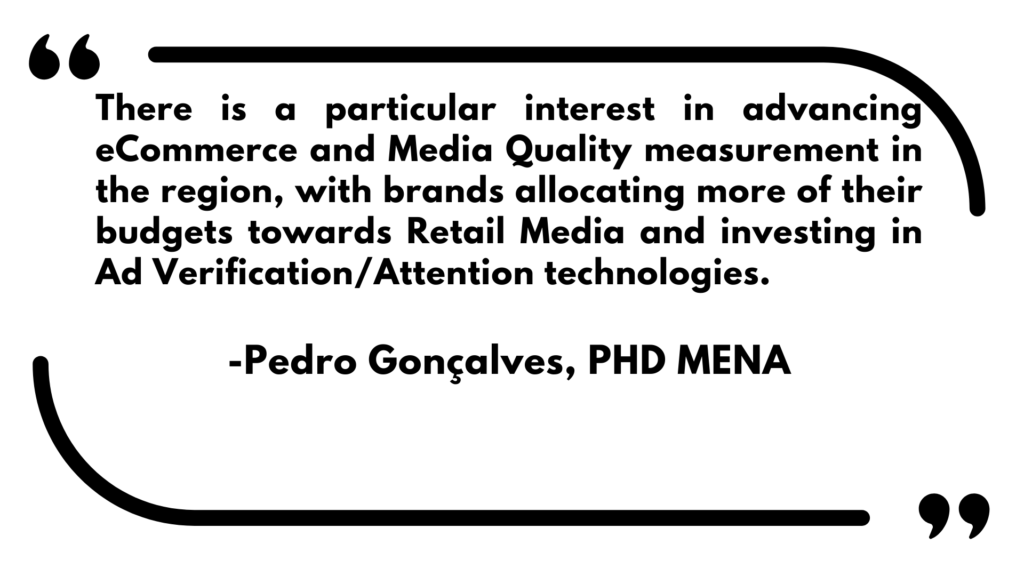
In the Middle East market, cultural nuances play a significant role. How do you navigate cultural nuances and tailor digital marketing strategies to resonate with diverse audiences?
From a marketer’s perspective, addressing multiple audiences in communication introduces various operational and cost considerations. My approach to this challenge involves establishing a primary focus on what unites our target audiences, rather than emphasizing the factors that set them apart. The next step is to map relevant pockets of opportunity that require specific and customized approaches.
This is where the importance of well-structured research becomes evident, as it remains the most effective way to uncover cultural norms and sensitivities that need to be integrated into the strategy. This includes language and dialect-specific messaging, as well as visuals that reflect population diversity and other segmentation techniques.
Can you share a memorable success story where your digital marketing strategies not only met but exceeded the expectations of stakeholders?
One of my all-time favorite projects is the work we undertook for the relaunch of the AXE brand for Unilever in 2015. At a time when Programmatic and Dynamic Advertising were still in their infancy, we managed to achieve massive personalization.
Featuring a modern Romeo & Juliet story, we meticulously crafted and distributed over 100,000+ long-form video ads, each tailored based on user audience behavior, engagement, and response data.
Through a process of radical collaboration among all parties, including the client, we developed a proprietary tech piece. This tech was fed with five master stories crafted by world-renowned directors, along with campaign performance data, enabling the continuous generation of unique long-form video ad variations served 100% programmatically. The outcome was a 1.7x higher retention rate and a 20% brand lift. The campaign garnered global recognition, industry coverage, and awards, prompting discussions with the client about replicating the model in future campaigns
In the context of Programmatic Media, how do you see the future of programmatic advertising evolving, and what challenges and opportunities do you anticipate?
The way I perceive it, the term “programmatic” will become redundant. When something evolves into the default standard, we refrain from labeling it as something unique and discussing it separately.
In its essence, programmatic signifies the use of automated technology to buy media. Examining our progression in understanding, its growth over the years, and forecasting into the future, it is poised to become the base and the majority of spending in our industry.
While the possibilities available through programmatic methods are getting bigger, with the rapid assimilation of other digital environments like Connected TV and even non-digital environments, fraud remains a formidable challenge. The more adept we become at detecting it, the more fraud diversifies, especially in emerging formats. An often overlooked advantage is the establishment of a centralized repository for brand activity data. This organized information, readily available within programmatic platforms, replaces unreliable manual spreadsheets and presentations.
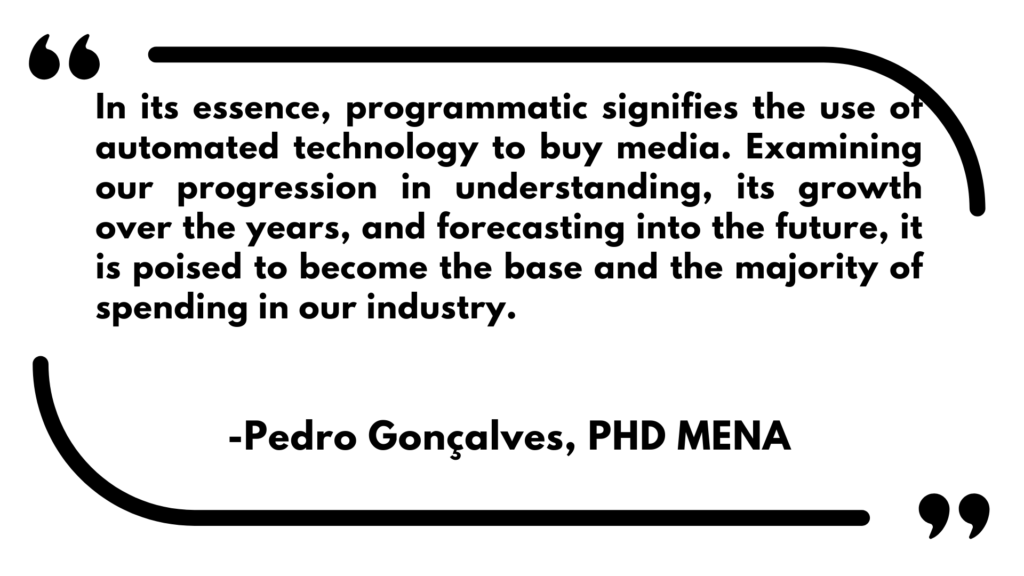
In the ever-expanding landscape of MarTech and AdTech, how do you evaluate and select the most relevant technologies for your digital marketing stack, and what criteria do you prioritize in making these decisions?
I focus not only on comprehending the value proposition of each new technology and how to seize the opportunities within it but also closely monitor how users are reacting to it. This involves assessing if it is skewing towards a specific audience group, checking for overlap and audience fragmentation, and, more importantly, ensuring brand safety and suitability in a way that applies to the new platform.
With an expanding array of options at our disposal, the complexity of how we plan, craft, and perfect connections with customers increases. To counter this, it is crucial to have a dedicated framework that enables brands to be nimble in exploring fast-paced trends and avoiding pitfalls amidst ongoing changes with each partner, all while maximizing the use of algorithmic learning.
It is also imperative to assess if new players can bring robust capabilities and diversified options in terms of formats and targeting, capable of driving results across distinct stages of the consumer journey. This enables us to swiftly categorize natural tendencies and well-established roles for each.
Looking ahead, what do you see as the next big frontier or challenge in the digital marketing landscape, and how do you plan to address it?
Privacy and data collection have become the most debated challenges recently, leading us to the next one: Addressability. Over the past years, marketers have heavily invested in collecting, cleaning, and categorizing data, enabling them to connect at will with specific audiences and customers. However, just one recent change implemented by Apple rendered a significant part of this asset unusable.
With the impending demise of third-party cookies, some organizations still believe they can continue using the same data practices, merely relying on a different type of technology. In my view, this is shortsighted and deviates from a real opportunity for the advertising industry: to offer new types of CRM solutions, grow revenues, and secure a stronger preferred partner position with brands.
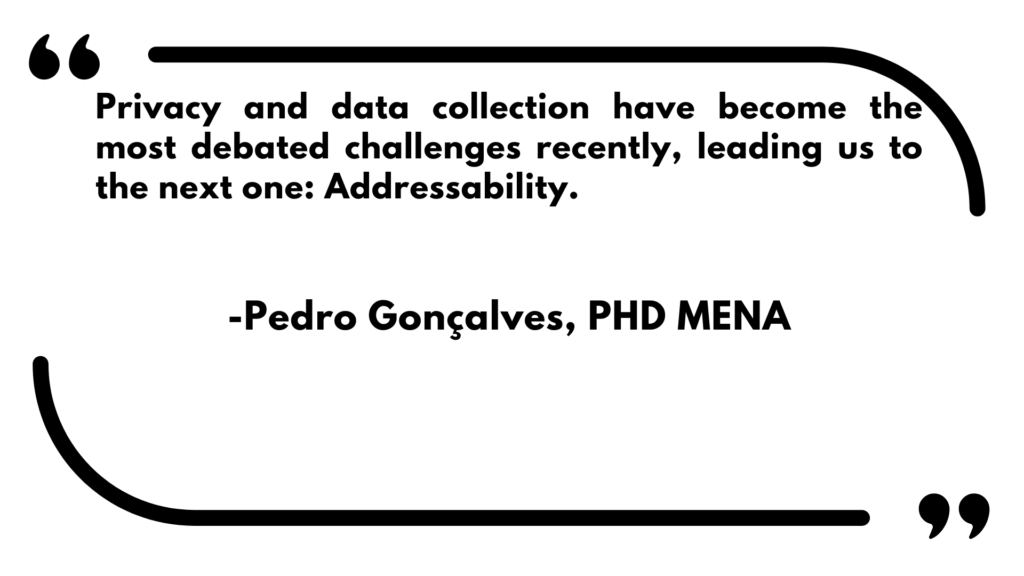
Lastly, if your digital marketing approach were a puzzle, what pieces would represent the key elements, and how do they fit together to create a complete picture of success? What can be an answer to this?
To me, everything starts and ends with data.
Sourcing analytical data, such as market and customer research, cultural factors, media consumption, and other relevant types of information, would be my essential piece in this puzzle.
Next comes data analysis, making sense of the collected data, and transforming it into relevant and applicable insights for your context.
We then incorporate data-backed decisions, derived from the outputs of the data analysis, making your strategy distinctly yours and no one else’s. Following that is data-driven activation, where you bring strategies to life by translating all earlier steps into audiences, channels, signals, connections, journeys, and messages.
A data-led optimization ditches the guesswork, improves immediate results, and feeds the last piece: closed-loop data, using all the new info as a fresh, unique, ongoing, and growing analytical data source, thus empowering creativity.
Wavemaker Defends the Media AOR For L’Oréal in Thailand
After a competitive review, Wavemaker, a division of WPP, has defended the media AOR for L’Oréal in Thailand for the next three years, starting in January 2024. After 13 years of collaboration, L’Oréal and Wavemaker have extended their role, with the agency now handling media strategies and e-commerce sales in Thailand in addition to planning.
Wavemaker – L’Oréal Thailand Media AOR
The incumbent agency’s dedication to data and consumer insights throughout the pitch process impressed the French beauty giant, Maybelline’s parent company. An example of this is the establishment of Beauty Tech Labs, a specialized client-agency team made up of AI specialists and innovators to exchange resources and knowledge throughout the WPP network.
With L’Oréal, the retainer broadens Wavemaker’s expanding worldwide mandate. Media mandates in Australia, New Zealand, Germany, Austria, and Switzerland have been awarded to the Media agency. Additionally, the agency kept the $61 million Indian business.
Read More: WPP and Sprinklr Partner to Bring AI-Powered CXM Solutions
Here’s what they said
As reported by Campaign Asia,
Yada Sarttarasathit, chief digital and marketing officer of L’Oréal Groupe in Thailand said,
We are excited to continue our journey with Wavemaker, who has proven to be a highly compatible partner. We look forward to harnessing their synergy and innovative media strategies to create the beauty that moves the world.
Christopher Orcutt, managing director of Wavemaker Thailand added,
We will leverage our data and knowledge from the WPP network worldwide to drive media planning and e-commerce strategies for L’Oréal. Our goal is to create comprehensive online and offline beauty experiences for every Thai consumer.
Read More: Madison Loop Wins Oberoi Realty’s Integrated Communications Mandate
TikTok Launches TikTok Shop in the US, Transforms Online Retail
TikTok is finally launching its retail aspirations with TikTok Shop for all users in the US after years of testing and rumors. The business aims to transform the culture of online shopping with motivating hashtags like #TikTokMadeMeBuyIt. On the app’s home screen, a Shop button now connects users to a marketplace. With a few clicks, a user can purchase items without exiting the app. Additionally, some of the products will have a Shop button in the films that will take viewers to the store. The corporation is placing a big gamble with this decision because it hopes to generate a new revenue source in the US, where the app has over 150 million users, by leveraging the app’s cultural influence.
TikTok Shop blends the strength of community, creativity, and commerce to offer a seamless buying experience while empowering brands and creators to interact with avid consumers based on their interests. The launch of a retail portal on a social networking platform is nothing new. The Shop tab was previously introduced by Instagram in 2020. It allowed customers to browse the brand’s Instagram photographs and videos and make purchases. The tab, though, was dropped earlier in March.
TikTok Shop
With TikTok Shop, the company offers users a way to enjoy the thrill of finding and buying new things without ever leaving the app. It has created easy-to-use tools to assist businesses in making this a reality. TikTok Shop is a separate tab that users may use to search for and find various things, explore goods in various categories, and handle their orders.
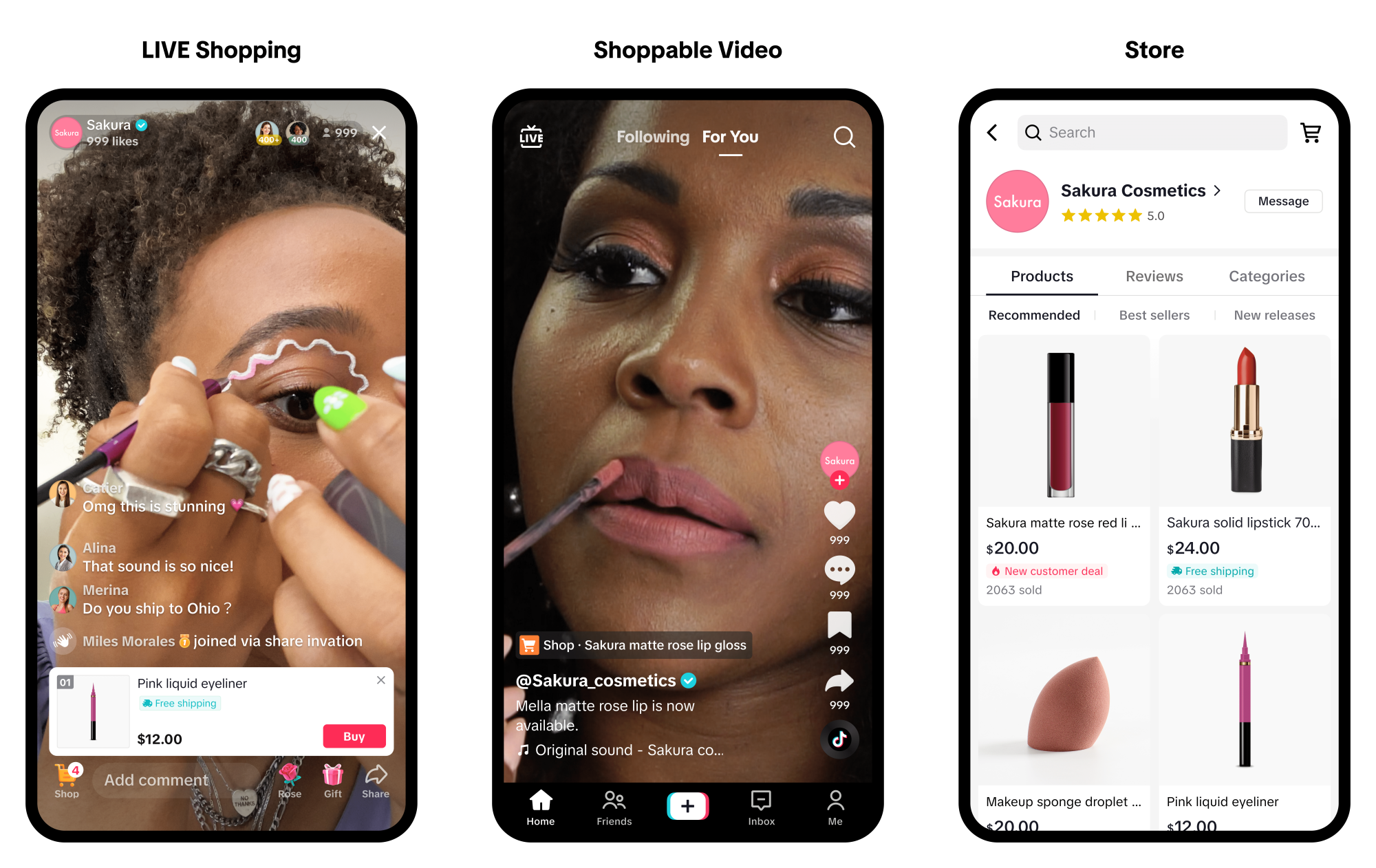
Image credit- TikTok
Read more: NYC Bans TikTok On City-Issued Devices Amid Security Concerns
In-Feed Video and LIVE Shopping
Shop tagged items directly from videos and LIVEs on the “FOR YOU” feed’s in-feed video and LIVE shopping feature.
Product Showcase
Browse product names, read reviews, and make direct purchases from the profile of a favorite brand. On their profile page, businesses can create personalized product collections.
Shop Tab
Companies list their goods on a marketplace for new products, where shoppers can quickly search and find deals. Shoppable content and product listings highlight product recommendations, and buyers may manage orders from one tab.
Affiliate Program
Through new commission-based product marketing opportunities, creators can get in touch with sellers. Creators have a new option to monetize their talent by showcasing products in quick videos and livestreams. Sellers may select the affiliate plan that’s best for their business.
Shop Ads
New TikTok Shop Ads give sellers more possibilities to advertise their TikTok Shops so that users may find them and make purchases there.
Fulfilled by TikTok
TikTok Shop stores pick, pack, and then ship sellers’ products to clients as part of their new logistics service. This allows retailers to concentrate on their own products.
Secure checkout
To ensure a quick, simple, and secure checkout procedure, TikTok collaborates with reputable third-party payment platforms to enable transactions on the TikTok Shop. All US user data that is safeguarded by TikTok is kept in the country and maintained by USDS.
The social media site can gather more user data through its Shop tab, including addresses, financial data, and purchasing preferences. However, TikTok has stressed that all data gathered from US customers is maintained in the nation and managed by USDS, a distinct institution responsible for handling user data. TikTok is already under fire for its ties with China and has drawn criticism for it.
Read more: Zeotap Data Joins TikTok to Enhance Targeting And Boost Ad Campaign
How to Sign Up for the TikTok Shop?
In the TikTok app,
- Visit your profile and using the menu, navigate to Creator tools.
- You will see the option to sign up for the TikTok shop as a seller or creator to earn brand commission
- Creators must at least have 5,000 followers and be 18 years old to be eligible for the TikTok Shop affiliate program.
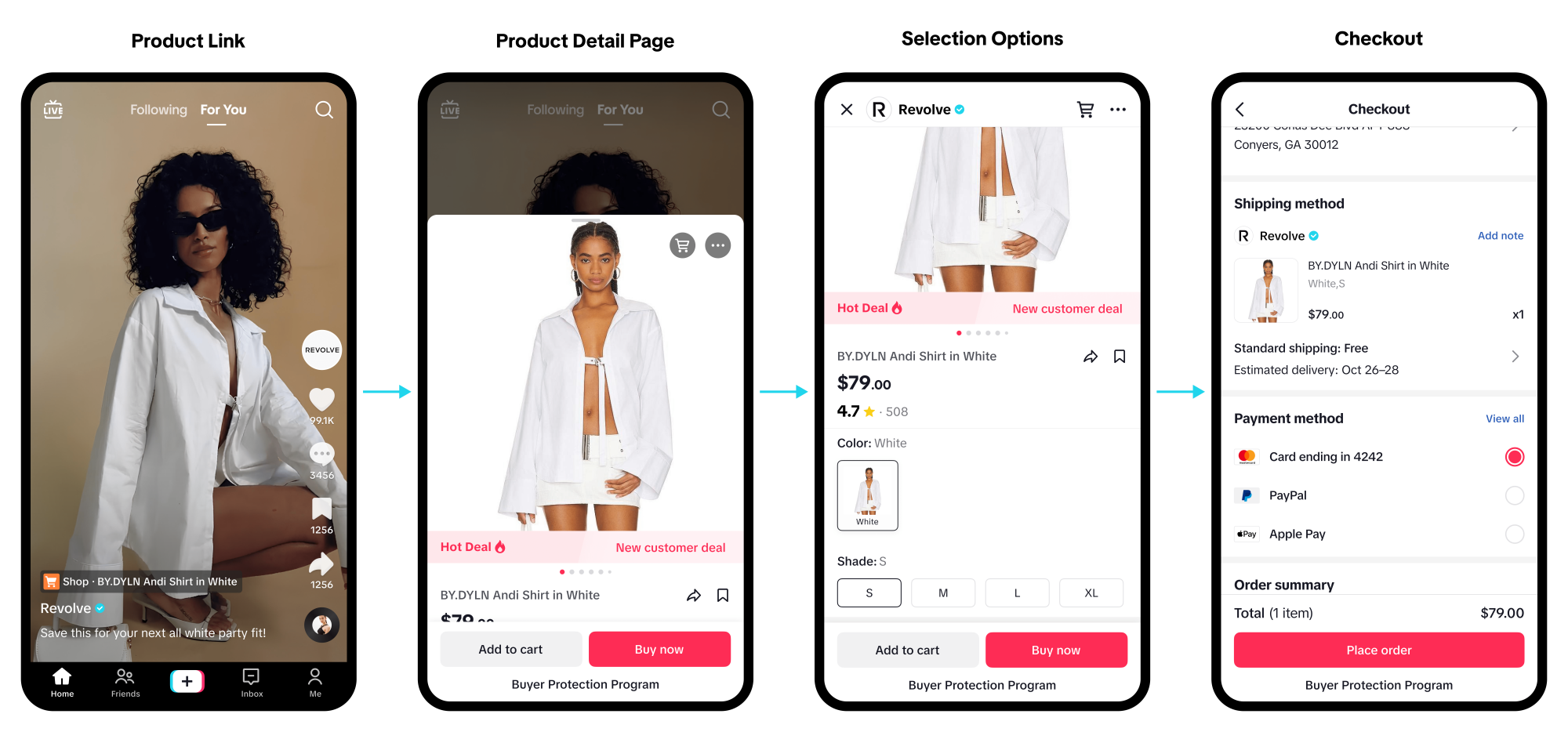
Image credit- TikTok
TikTok shop’s integration with E-commerce Apps
Several well-known e-commerce platforms, including Shopify, WooCommerce, BigCommerce, Magneto, and Salesforce Commerce Cloud, have connected with TikTok Shop. As a result, it should be simple for current online merchants to begin selling on TikTok without starting from scratch. In order to promote omnichannel businesses, TikTok has also worked with a number of multi-channel platforms, including Channel Advisor and Feedonomics. Vendors can use apps from companies like Zendesk, Printful, Yotpo, EasyShip, and others to enhance TikTok Shops’ functionality and capabilities.
Influencer marketing and social commerce in the future
Although the TikTok shop has a lot of potential, concerns around data privacy will always exist. The corporation faces a challenging task in maintaining a positive user experience while upholding privacy and security concerns, largely because of previous incidents involving user data. In order to protect users’ security and privacy, TikTok uses reputable third-party payment platforms. Integrating customer contact with e-commerce, as each interaction may result in a direct sale or an affiliate commission. Thailand, Vietnam, Malaysia, the Philippines, Singapore, and the UK are among the nations that have access to TikTok’s online marketplace.
Read More: TikTok Prioritize User Rights with Revised DSA Standards in the EU
New ‘Instacart for Shopify App’ Revolutionizes Merchant Advertising
The most prominent grocery technology firm in North America, Instacart, recently unveiled a brand-new Instacart for Shopify app. The novel solution gives Shopify’s up-and-coming consumer packaged goods (CPG) firms access to Instacart Ads. Shopify businesses can now seamlessly connect to Instacart Ads’ tools, insights, and automation. Over 1400 retail banners throughout North America are partnered with Instacart. With this innovative integration, Instacart continues to support emerging brands’ rapid growth. Additionally, it would provide Shopify merchants access to crucial sales information and self-serve ad goods. This indicates that many CPG brands on Shopify are probably generating revenue through the Instacart Marketplace without taking any additional action.
Instacart and its partners
The announcement strengthens Instacart’s dedication to assisting up-and-coming firms in driving omnichannel growth. Instacart simplified the design of Ads Manager in the previous year so that marketers could quickly select an aim and receive customized, enhanced suggestions for the ad forms. To achieve their corporate objectives, they included specific targeting and bidding alternatives. The business has increased its measurement capabilities. In order to assist brands in discovering the real effect of their Instacart Ads campaigns, it also provides sales lift testing and A/B testing. The average increase in sales for Instacart’s brand partners is above 15%, and in certain situations, it is even higher.
Instacart Integration with Shopify for merchants
For the first time ever, Shopify merchants can promote their company with Instacart Ads by using the Instacart for Shopify App. By offering insight into their Instacart sales directly in Shopify, where they already oversee the rest of their business, the new Instacart for Shopify app aids merchants in better understanding their business. With this visibility, businesses can take action to expand their reach and success among Instacart users.
The Instacart for Shopify App enables retailers to simply create an Instacart Ads Manager Account, view high-level ad performance analytics, and track their overall sales on Instacart. This integration serves as further evidence of Instacart’s commitment to providing new businesses with the resources and market knowledge they require to develop and engage with customers at the point of sale.
Read More: Roku-Shopify Revolutionize TV Ads By Enabling On-Screen Purchases
How will it work?
A retailer can create a free Instacart Ads Manager Account after installing the Instacart App on Shopify. Standard onboarding takes less time thanks to features like automatic product recognition.
- The Instacart for Shopify app displays information about Instacart sales and KPIs from marketing campaigns.
- Retailers can track the performance of their brands across several channels in a single location.
- Use the best digital marketing tools available in Ads Manager to expand their brand.
- Use tried-and-true ad formats, such as Instacart’s featured product ads.
- Give CPG businesses prime digital shelf space throughout the Instacart Marketplace.
Here’s what they said
Ali Miller, Vice President of Product Management at Instacart commented,
With our extensive catalog across more than 80,000 retail partner stores in North America, we believe Instacart has one of the best platforms to help emerging brands grow. Combining our scale with Shopify’s merchant network creates a really powerful discovery tool for brands looking to understand their impact across different channels. With the Instacart for Shopify app, brands can learn about the sales they’re already driving on Instacart, and immediately take action by setting up Instacart Ads to supercharge discovery and sales.
Antonio Silva, Director of Partnerships at Shopify said,
At Shopify, we are committed to forging partnerships that empower our merchants and keep them on the cutting edge. Wherever there is an opportunity to connect merchants and buyers together, Shopify is there first. By offering access to efficient and effective advertising solutions through Instacart’s integration with Shopify, our merchants gain valuable insights about sales data, advertising opportunities and performance across Instacart’s marketplace directly within their Shopify dashboard.
Read More: Kofluence Unveils Kofinity, An Assured Path to Brand Partnerships
Wavemaker India Launches D2C Solutions Unit
Group M’s most awarded media agency, Wavemaker India, has recently launched a new Direct-to-Consumer (D2C) practice to assist brands in implementing and navigating successful D2C strategies for growth. Notably, the media agency is already working with established brands such as MTR Foods, Nokia, L’Oréal, and many others.
In addition to launching a new Direct-to-Consumer (D2C) practice, Wavemaker India’s modular approach will enable brands to choose specific solutions they need for optimization. Moreover, the media agency will introduce a separate program that focuses on working with D2C start-ups to scale demand and operations, providing more opportunities for growth and success.
Wavemaker India’s mandate involves providing end-to-end solutions for brands to simplify their Direct-to-Consumer (D2C) channel strategy and deployment. The media agency will assist clients with their technology stack, design customer experiences, set up a growth platform, and manage the entire fulfillment infrastructure to optimize brand performance.
Ajay Gupte, CEO – South Asia, Wavemaker said,
“We are committed to creating solutions which offer unparalleled growth to our brands and partners. We have been investing and building this capability for a few years now. Launching the D2C practice marks the expansion of our digital and E-Commerce offerings and is a step toward providing focused solutions for brands who are to manage their value proposition and value chain.”
Vishal Jacob, Chief Transformation and Digital Officer, Wavemaker India said,
“We have seen a lot of brands wanting to build a direct connection with their consumers. Consumers too are looking for a closer relationship with brands making it important for D2C marketers to adapt and stay relevant in the game. Our D2C practice will help marketers plan better and tailor their offerings to better suit their customers.
Interesting Read: The AI Search War: Microsoft & Google Compete for Search Engine Leadership
Noon Acquires Leading Online Fashion Retailer Namshi
Noon, a leading e-commerce company based in Riyadh, has successfully acquired online fashion retailer Namshi. The acquisition is now in effect, immediately expanding Noon’s offerings in products and services. The online marketplace made the announcement on Monday, signaling its continued growth and expansion in the industry.
Noon’s logistics, fulfillment networks, fleet, and in-house e-commerce experts will be available to Namshi, which will remain a separate entity. The company statement said that the e-commerce platform will continue to support Namshi’s growth as an independent entity within the company.
The fashion platform, which has been serving customers in the UAE, Saudi Arabia, and other countries since 2011, has more than 1,200 brands. Namshi’s acquisition will broaden Noon’s offering of products and services to include more fashion and lifestyle brands for consumers throughout the region.
Hisham Zarka, chief technology officer of the Noon Group and co-founder of Namshi said,
“We know that both Noon and Namshi have a long way to go, but that just means that the opportunity ahead remains immense.”
“This merger will enable Namshi to make deep and long-term investments and in the months and years to come, our customers and partners can look forward to better assortment, pricing and service as these investments are realized.”
Dhruv Paul, group general counsel of the Noon Group said,
“This acquisition is a great opportunity for both Noon and Namshi. It allows us to reach out to new audiences while offering them unique products.”
As of last August, Noon had an agreement with Emaar Properties to purchase Emaar Malls in Namshi for AED 1.23 billion ($334.9 million). The completion of the acquisition comes after Emaar Properties shareholders approved the sale of Namshi to Noon.
Dubai Chamber of Commerce forecasts UAE’s eCommerce market to reach $9.2 billion by 2026, a 92% increase from 2021. UAE’s eCommerce Sector experiencing significant Growth due to rising consumer demand for online shopping and strong investment in infrastructure
Interesting Read: Lemma and Phi Advertising Collaborate to Bring Programmatic Advertising to UAE Market
Walmart Connect Partners With Snap, Roku And TikTok To Measure Online Shopping Ads
Walmart introduced a series of “Innovation Partners” that can support measuring how social media and CTV ads affect sales. For the first time ever, the retail giant is expanding its ad reach beyond its own eCommerce platform. Walmart Connect announced a new “Innovation Partners” category. This category will include video-specific measurement deals with TikTok, Snap, Roku, Fireworks, and TalkShopLive. This partnership will help to measure any sales that come from ads.
Interesting Read: Walmart Connect: Walmart’s Ambitious Advertising Plans For Its Programmatic Platform
Expanding their ad business
In recent times, Walmart has expanded impressively and has a $2 billion ad business. As Walmart’s ad business rebranded to Connect last year, it’s added new partners and ad tech companies since settling on The Trade Desk as a DSP tech provider. Advertisers and brands can buy ads with Walmart data through The Trade Desk, Walmart’s ad platform. The company added eCommerce search ad specialists such as Pacvue, Skai, and Flywheel Digital as partners in 2021. The Walmart Connect program also welcomed 14 additional analytics and ad optimization companies in July.
In the expansion mode, the retail media platform partners with TikTok and Snap to measure social commerce, Roku for CTV ads, Firework, and TalkShopLive for live shopping content. Seth Dallaire, executive vice president and CRO of Walmart, wrote in a post,
“As the media funnel continues to collapse, advertisers are realizing the opportunity to reach shoppers on leading platforms where they are increasingly spending their time.”
Interesting Read: Foodpanda Forays Into Adtech In Partnership With Group M
The Innovative Partners
Walled gardens like Roku, TikTok, and Snap aim to demonstrate their ad platforms’ value.
The Snap agreement is a “first-of-their-kind type partnership”. It will bring advertisers Snap Ads, Collection Ads, and Snap AR with Walmart Connect geo-based measurement of omnichannel sales lift. This is the first time advertisers can buy Snap ad units through Walmart Connect and get in front of the unique Snapchat audience (75% of 13-34 year-olds in the U.S.), who hold over $1.9 trillion in spending power.
TikTok and Snap will not have their inventory available through The Trade Desk’s Walmart DSP. They are walled gardens and as a result, no outside programmatic trading desks are allowed.
The first-to-market pilot between TikTok and Walmart Connect will provide advertisers with the opportunity to serve in-feed ads on TikTok, leveraging the impact of TikTok’s sound-on full-screen video format together with Walmart Connect’s targeting and measurement.
Unlike other walled gardens, TikTok’s ad platform is widely regarded as under-attributing its own revenues. Whereas, other walled gardens generally over-attribute in their own favor. The reason behind this is that TikTok uses last-click attribution and a session-length attribution window, so it will miss sales if users don’t click and convert immediately.
Walmart recently partnered with Roku to make TV streaming the next e-commerce shopping destination. Streamers can purchase featured products fulfilled by Walmart directly on the streaming TV platform. Walmart Connect will connect brands to customers through the T-commerce platform on Roku. Advertisers will receive insights on the effectiveness of Walmart Connect measurement.
Walmart is also working with live video platforms with sponsored brand placements- TalkShop Live and Firework to produce online sales programming on Walmart.com. Walmart is testing the new service on brands such as J&J, P&G, and Samsung, among others. The program on Walmart Connect’s advertising platform is not automated but a managed service. Brands will get the performance reports of how ad campaigns influenced sales on TikTok, Snap, and Roku.
Interesting Read: Foodpanda Forays Into Adtech In Partnership With Group M
A tight race
With its ad platform, Walmart competes with Amazon, which has also invested in live shopping programs. In addition, Amazon’s roaster of talent streams sales events, most prominently on holidays and Prime day. Roku and Pinterest have already partnered with Kroger to enter the market, and Kroger’s own ad business has been expanded with PubMatic and Magnite.
Marketers and publishers are keen to discover how consumers react to social media advertising by making purchases or engaging with it. Even though social commerce is still in its infancy, Walmart’s partnerships with social media platforms show that they are proving that their ads do lead to sales. Rich Lehrfeld, Walmart SVP and GM of the Walmart Connect group told AdExchanger,
“Over time you’ll see our partnerships starting to expand into different areas that are really what our advertisers, or what we call our customers, as well as suppliers and sellers are asking us to do because they love our measurement.”
Advertisers can leverage Walmart’s unparalleled first-party omnichannel data to deliver measurable sales performance. Furthermore, it integrates with several PPC management tools that are used by eCommerce businesses.
Interesting Read: The Journey From Deterministic To Probabilistic Marketing
Meta and JioMart Will Launch Chat-To-Cart Services In India
Meta and Jio Platforms have announced the launch of an end-to-end shopping experience on WhatsApp, where consumers can shop from JioMart right within their WhatsApp chat.
It will allow people in India to browse the JioMart catalog, add products to their cart and pay via local payments rail UPI without ever leaving the instant messaging service. People in India can simply start shopping on JioMart through WhatsApp by sending ‘Hi’ to the JioMart number. Recently, WhatsApp received approval to expand its UPI-powered payments service to 100 million Indians after several delays. Mark Zuckerberg, CEO of Meta, said in a statement,
Excited to launch our partnership with JioMart in India. This is our first-ever end-to-end shopping experience on WhatsApp — people can now buy groceries from JioMart right in a chat. Business messaging is an area with real momentum and chat-based experiences like this will be the go-to way people and businesses communicate in the years to come.
JioMart on WhatsApp allows Indians, including those who have never shopped online before, to browse JioMart’s entire grocery catalog seamlessly. WhatsApp chat allows shoppers to add items to their cart and complete their purchases without leaving the chat.
The launch is part of a strategic partnership between Meta and Jio Platforms to accelerate India’s digital transformation and provide people and businesses of all sizes opportunities to connect in new ways, fueling economic growth in the country.
The JioMart on WhatsApp experience will revolutionize the way millions of businesses across India connect with their consumers while bringing unparalleled simplicity and convenience to people’s shopping experience.
Interesting Read: GroupM’s outcome media specialist ‘Xaxis’ launched a new programmatic media commerce solution in India
Meta’s investment in Jio Platforms
Meta owns a substantial minority stake in Jio Platforms, the country’s largest telecom operator with over 421 million subscriber lines. Additionally, Jio announced it will invest $25 billion in the country’s 5G launch in October and hopes to reach “every town” by the end of next year.
This $221 billion Indian conglomerate is attempting to take on Amazon and Flipkart in the Indian market with JioMart. While Reliance Retail is the country’s largest retail chain, it offers limited e-commerce products at the moment. Mukesh Ambani, Chairman, and Managing Director, Reliance Industries said,
Our vision is to propel India as the world’s leading digital society. When Jio platforms and Meta announced our partnership in 2020, Mark and I shared a vision of bringing more people and businesses online and creating truly innovative solutions that will add convenience to the daily lives of every Indian.
He further added,
One example of an innovative customer experience that we are proud of developing is the first ever end-to-end shopping experience with JioMart on WhatsApp. The JioMart on WhatsApp experience furthers our commitment of enabling a simple and convenient way of online shopping to millions of Indians.

